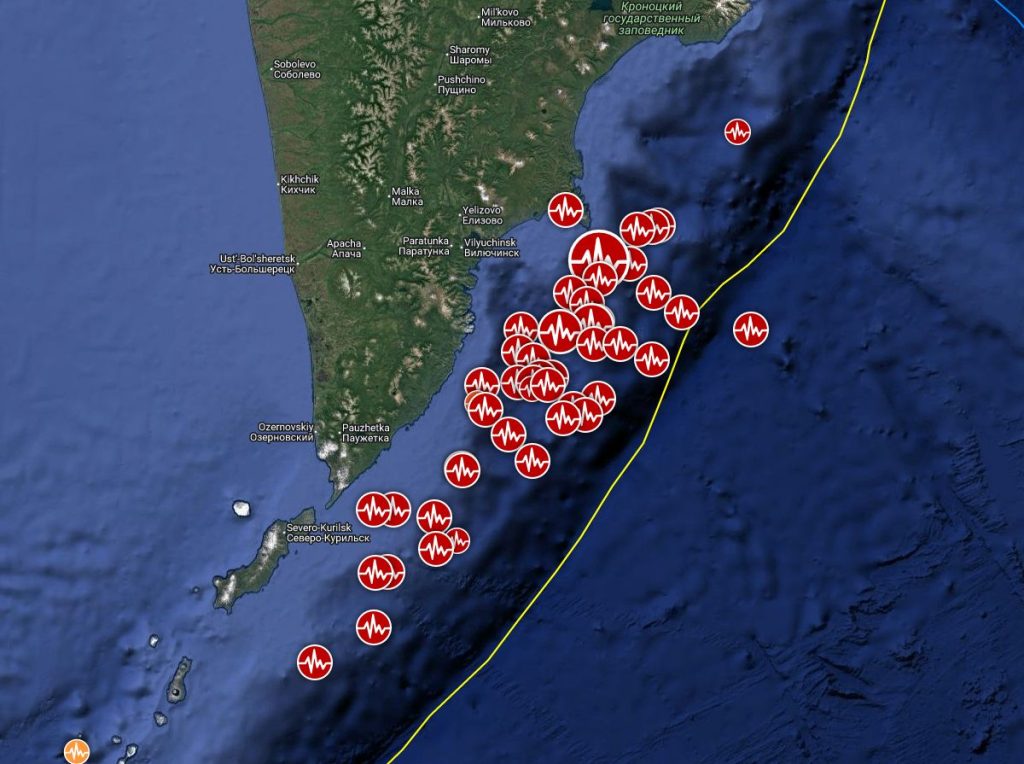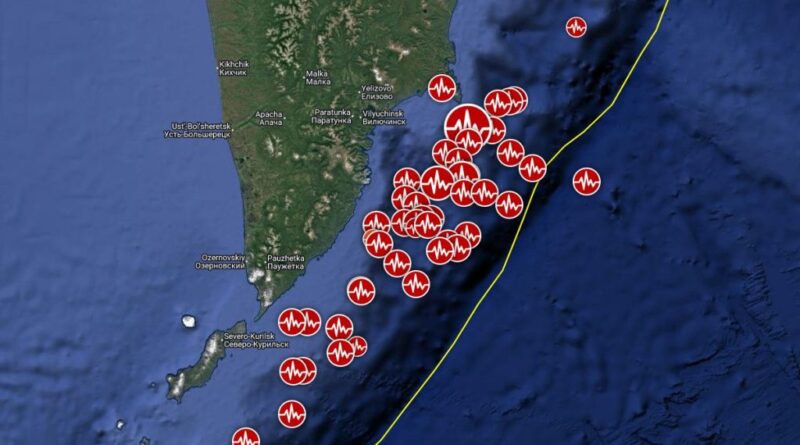Massive 8.8‑Magnitude Earthquake Strikes Russia’s Kamchatka Peninsula — Tsunami Alerts Across Pacific
A mega‑quake (8.8 M_w) hit Russia’s Kamchatka Peninsula, triggering Pacific-wide tsunami warnings, evacuations in Japan, Hawaii, and minor damage in Russia. What unfolded?

The Earth convulsed on July 30, 2025, when a massive 8.8‑magnitude earthquake struck off Russia’s remote Kamchatka Peninsula, making it tie for the sixth strongest quake ever recorded. Its epicenter lay just over 120 km southeast of Petropavlovsk‑Kamchatsky, at a shallow depth of ≈19 km, amplifying the ground shake and tsunami risk.
🌎 Tsunami Alerts Rock the Pacific Rim
Authorities immediately issued tsunami warnings—stretching from Japan and the Kuril Islands to Hawaii, Alaska, California, and Pacific island nations. Japan ordered evacuation of nearly 2 million residents, anticipating waves up to 3 meters, though actual surges amounted to around 1 ft in many coastal areas.
In Hawaii, waves reached ~1.7 m, prompting closure of harbors and airports. California’s northern coast saw modest impacts, with 1–1.6 ft tide swings, but no major casualties.
🇷🇺 Impact on Kamchatka & Russian Far East
In Kamchatka, vulnerable buildings, including a kindergarten and fish-processing plant, sustained damage. Power outages and communication blackouts affected Petropavlovsk-Kamchatsky and Severo‑Kurilsk. Authorities evacuated coastal communities as a precaution. Thankfully, casualties have been minimal so far.
⚠️ A Region Prone to Megaquakes
This event followed a spate of foreshocks, including a 7.4-magnitude quake on July 20, preceded by numerous shocks above magnitude 5‑6.9. The 8.8 quake ruptured approximately 390 × 140 km of the seafloor, releasing decades of tectonic stress.
The region sits atop the Kuril–Kamchatka subduction zone, where the Pacific Plate plunges beneath the North American Plate — known to produce large megathrust quakes since 1900, including the 1952 9.0 event.
🌊 Tsunami Science & Response
Seismologists warned that the shallow hypocenter and massive rupture zone made tsunami generation virtually unavoidable. Multiple tsunamis followed the mainshock, with waves continuing for over 24 hours due to ocean resonance. Experts emphasized that foreshocks may help improve future warning systems.
Thanks to effective early warning systems, evacuations were swift and life-saving. Hawaii and Japan demonstrated coordinated responses, in contrast to the delayed responses seen in past disasters.
🧠 Expert Insights & Global Lessons
Experts say while California and the San Andreas Fault are seismically active, they would unlikely generate such high magnitudes. Still, even lower magnitude quakes can cause immense destruction if centered near dense urban centers.
The earthquake has sparked warnings, urging nations in the Pacific Ring of Fire to enhance infrastructure resilience, reinforce early-warning systems, and conduct community preparedness drills.
✍️ Conclusion
With one of the strongest quakes in global history, Kamchatka reminded the world of the raw power of tectonics and oceanic ferocity. Though cities escaped mass devastation, the tsunami wake-up call reverberated across the Pacific.
The question now: as seismic threats evolve, will global communities be prepared when the next big one strikes?
For the latest updates in tech, news, war, health, and more — keep reading Phinex News.

